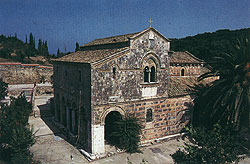Chlemoutsi

















Kyllini Area
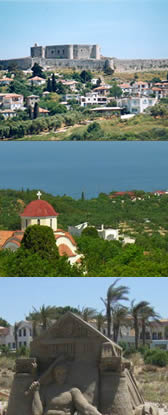
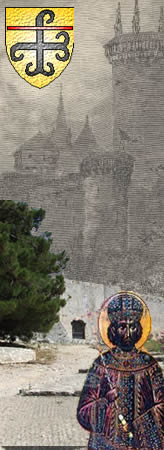
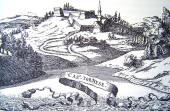
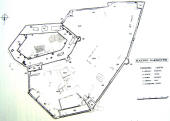
Castle of Chlemoutsi
The best preserved Frankish castle of Peloponnese. It is situated at the top of a hill 250 m.high, called with the ancient name Helonata.
The Castle of Chlemoutsi was built between 1220 and 1224 by Geoffrey I Villehardouin, a Prince who was the first inhabitant in this construction. After this, the Franks invaded the region and took control of the Castle, becoming its inhabitants for several years. During that epoque, this castle was very famous in the region and was considered a very important spot by the Peloponnesians.
After being inhabited by the Frankish, the Chlemoutsi Castle was home of several other invaders, such as per example, the Turkish, and the Venetians. All these inhabitants and the variety of events the castle has gone through gave shape to the way it looks today, although it has maintained its original structure and most of its characteristics almost unchanged.
The Castle of Chlemoutsi is often shown as a clear example of Frankish architecture due to its structure and general appearance. This castle or fortress was built following typical Frankish guidelines and is one of the clearest examples of a construction of such style in the Peloponnese, a factor which often attracts architects from all over the world who approach in order to meet this structure and its peculiarities.
The Castle of Chlemoutsi shows two main areas. One of these areas, known as the inner enclosure, contains a chapel, a small residence, and a bigger residence where the Prince used to live. The other area, the outer enclosure, used to have several smaller rooms and buildings, such as per example a mosque. In general, this construction shows softly pointed arches with many halls and doors along with a variety of small rooms. Several of these rooms still maintain their original appearance, although visitors could only meet the ruins of some others which didn’t have the same luck
local legends The brave king of Paliopoli (present-day Elis) fell in love with the queen of Chlemoutsi and she returned his feelings; but a mysterious curse befell them: if they exposed themselves to light, they would immediately turn into marble. And so, he was called 'Sunless' and she was called 'Moonless', and they only met by way of a long underground tunnel, which connected Paliopoli to Chlemoutsi. However, daybreak caught Sunless once, as he was slipping back to his palace, and he instantly froze. Moonless has not stopped lamenting for her lover ever since, wandering through the depths of the castle on moonless nights, searching for him. If you listen carefully, you may hear her weep...
The archeological ruins as well as texts are interspersed everywhere confirm the very ancient and continuous habitation of the area from the Paleolithic ages until today.
Ancient Kyllini is mentioned from Homer (8th century B.C.) as a participant in the Trojan expedition (12th century B.C.). It was the seaport of the town-state Ilis, which was the organizer of the Olympic Games and followed the fate and peaceful existence of its inhabitants. It is often mentioned by ancient authors and in particular the historian Thucydides (5th century B.C.) referred to its misadventures during the Peloponnesian War. Furthermore, Pafsanias in his travels visited the port in the 2nd century B.C. and gave us details in his work "Travels in Greece - Iliaka".
The beautiful monastery of Vlaherna is an evidence of the flourishing period of the region together with the remaining "Morea", during the Byzantine years. The foundation of the Principality of Achaia is dated from the Frankish domination, which followed, with its castle Chlemoutsi (Clermont, Castle Tornese) and its port Glarentza (Clarence) in lieu of ancient Kyllini. The region flourished only during the reign of the hegemonies of the Villearduins. This was followed by the economic exploitation of a series of "gentlemen" who were administering the region from distant administration centers while attacks from pirates were the cause of further decline and decay.
In 1427, the region passed on to Constantine Paleologos, last emperor of Byzantium, for a brief period, and then fell under the Ottoman occupation (1453 - 1821) with only a short interval when the Venetians occupied it from 1687 - 1715.
During the Greek revolution (1821) against Turks, the region joined forces Sissinides, notables of Gastouni. In this holy war Glarentza received the competitors from the Ionian islands and helped those who were persecuted. In Chlemoutsi the locals resisted Ibrahim Pasha of Egypt.
From the creation of the independent Greek state (1830) till today, the main factors which determined the economy and life of the region were the following: agriculture - stock raising and fishing, the sea connection of Kyllini with the Ionian Islands (1863) , its local train connection - as well as those of Loutra - with the main network, the exploitation of Loutra (Lintzi)'s thermal baths, the settlement of Greek refugees from Minor Asia as well as many others coming from the Ionian islands, nomads from the mountains of Peloponnisos (Kyllini - Neohori) and, finally, the foundation of the settlement Ikaros with the necessary infrastructure for the air base of Andravida.
The newly founded municipality of Kastro - Kyllini is under the responsibility of the Ilia's prefecture and covers 49,3 th. sq. m. having a population of 4.398 (1991 census). It contains four municipal departments, which are: Kastro (857 inhabitants) where the chlemoutsi castle located, Kato Panayia (1266 inhab.), Neohori (1323 inhab.) and Kyllini (952 inhab.) which is the capital of the area.
